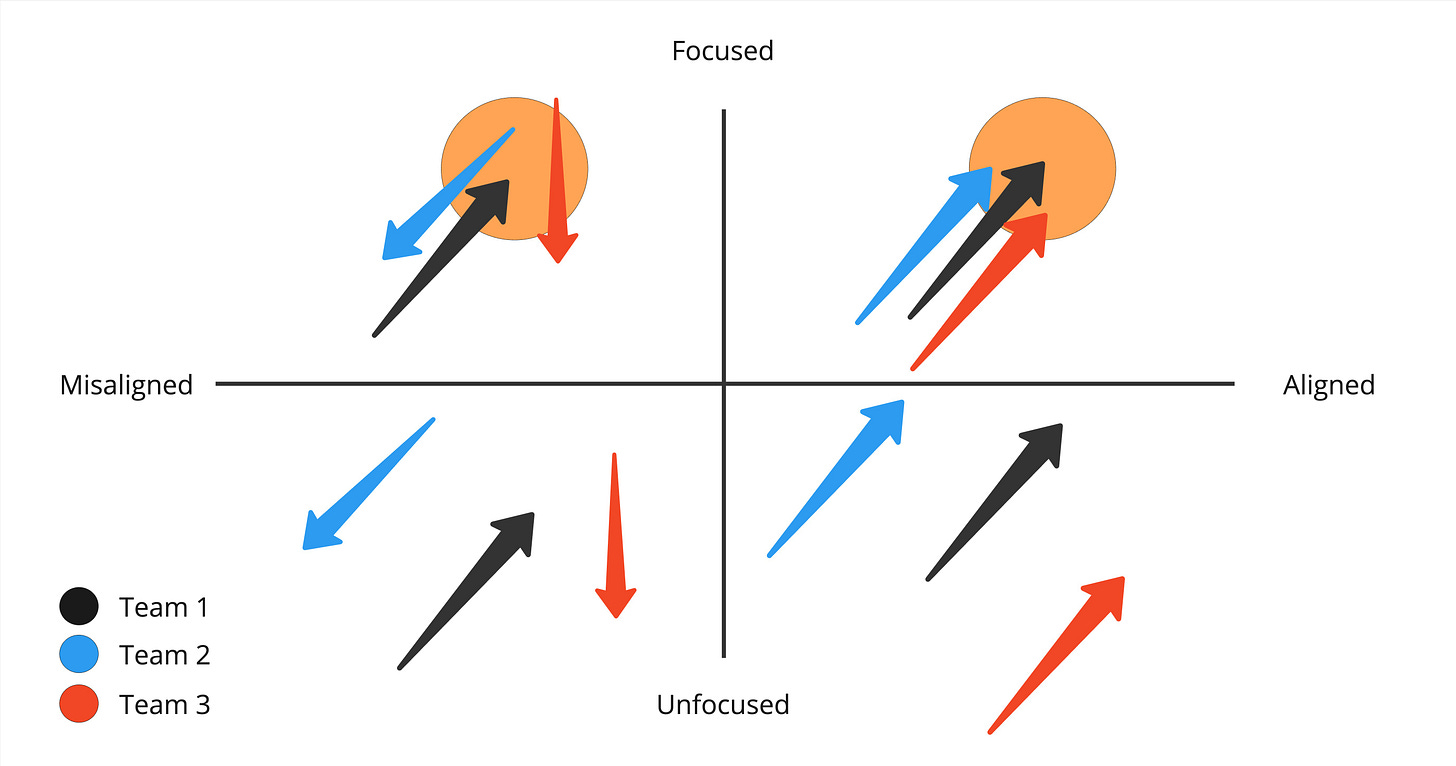Strategy vs. business strategy vs. product strategy?
What does it all mean AHHHHHH
I was working on the manuscript this morning and re-tackled this question, so I wanted to share it with you hot-off-the-keys. Here you go:
A strategy is the approach to achieving a goal. Whatever the goal is, strategy is your high-level approach to accomplishing it.
A good strategy makes explicit choices which create a framework for decision making. This framework both focuses and aligns energy on the point(s) of leverage where it can overcome the obstacle(s) to our goals. This is the "mechanism of action" of good strategy.
This means that a good strategy is a force multiplier on execution, yielding more progress per unit of effort. The fewer resources you have at your disposal, the more important strategy becomes: you need to get all the progress you can with what you've got (startups, are you listening?).
A business strategy is the approach for a business to win in its market(s) of choice. This is often phrased as "where to play and how to win.1" The end result of good business strategy is that the business enjoys sustainably better economics than rivals. This is what is "sustainable competitive advantage" means. It shows up in the P&L. Strategy is an evolving theory of how we can use what we DO control to compel what we DON'T control—namely customer behavior2. It bets on a possible future and tries to make that future be the one that happens.
So: what is a product strategy?
Product strategy is the approach to realize the product vision and meet the needs of the business.
A product strategy explains how the product will contribute to the business achieving its goals. It does this by choosing which customer and business problems the product will solve, in what order, and why.


